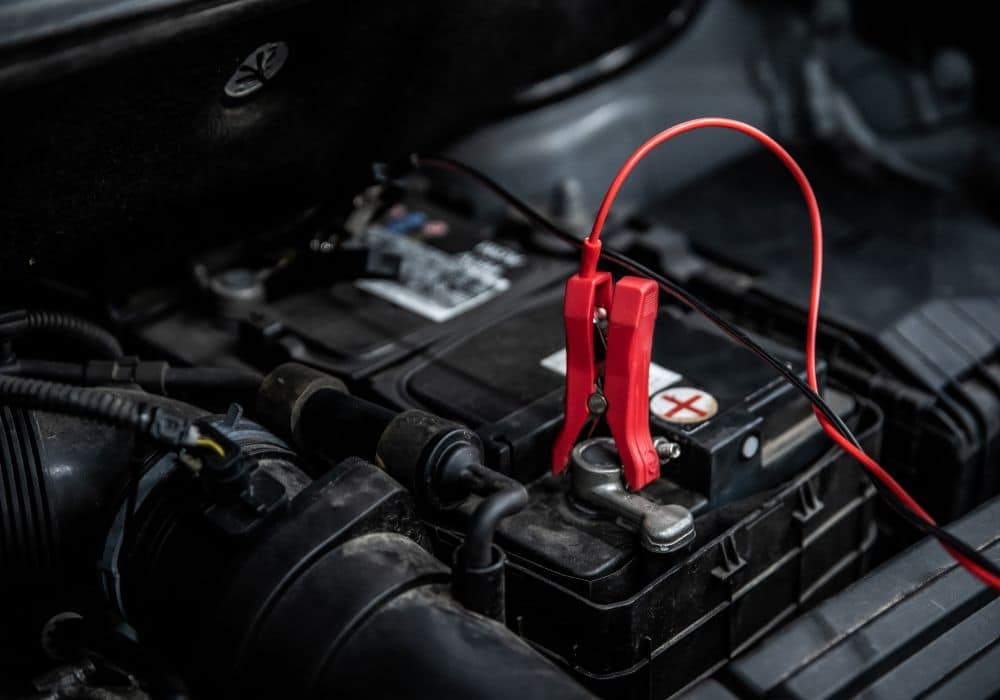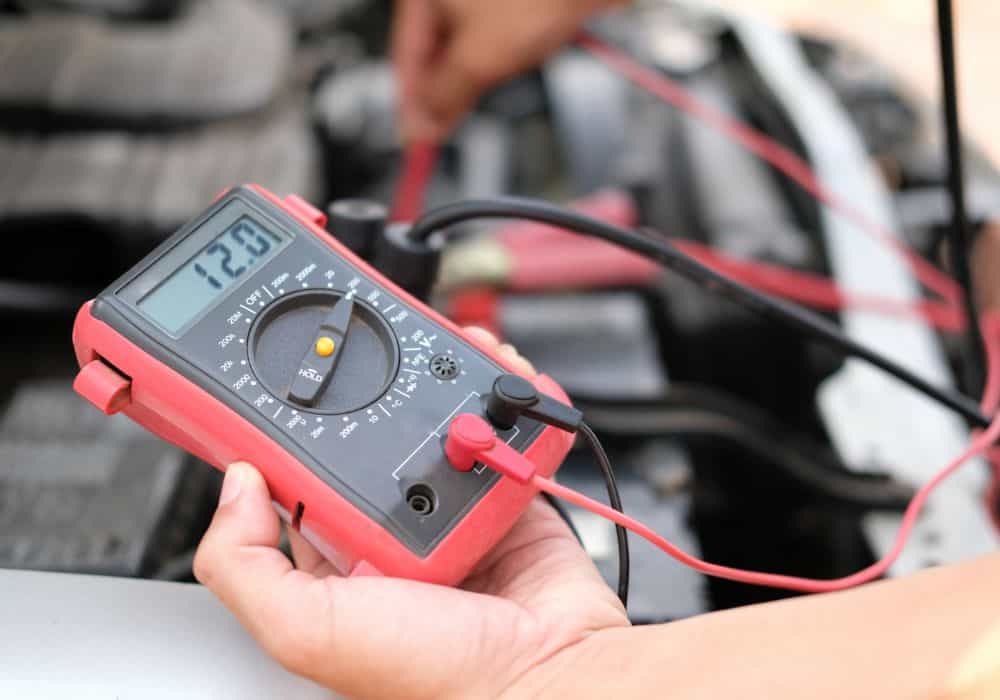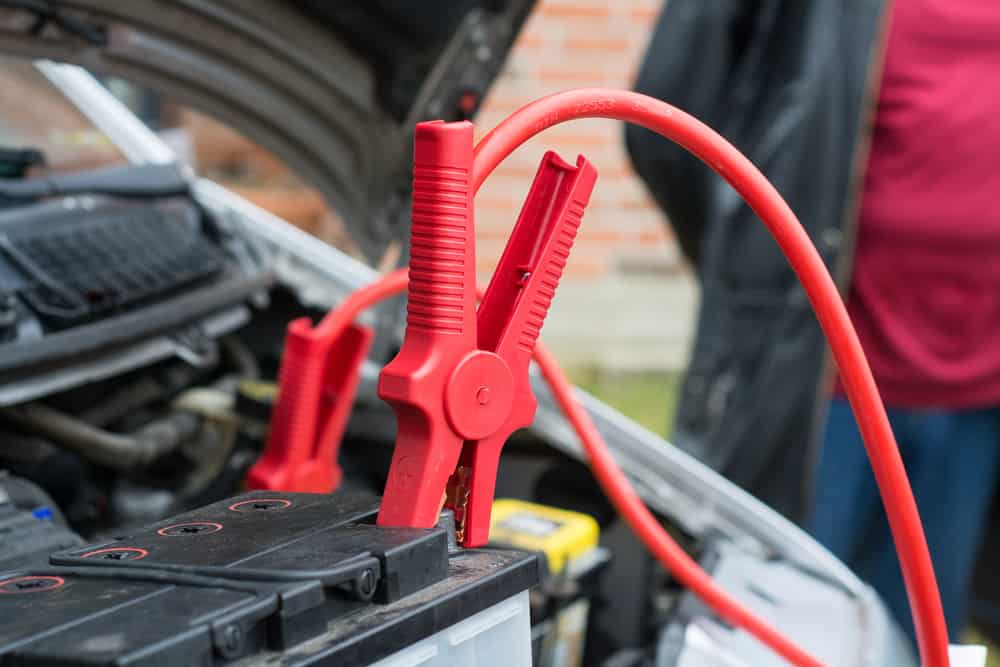One of the easiest ways to start a dead car battery is to jump-start it. Many car owners use this method to get the battery going when the alternator fails or stops working. However, if you jump-start your battery, you must determine how long to charge it before it is safe to use it.
Table of Contents
Recharging a Car Battery after Jump-starting It
Driving the car should recharge the battery by design, but it does not end there. You must know the time required to charge it properly. It should take at least thirty minutes to charge the battery enough to allow you to disconnect it from the charger or turn the car off.
This period gives the alternator time to build enough energy or juice that it loses when jump-starting the battery. In other words, you need to drive the car around or leave it charging for at least half an hour after jumping it.
It may take longer to charge if the battery is completely dead. While you can drive a car with a battery you jump-start, it is not safe to do so. The alternator takes longer to recharge the battery, and the car can stop again quickly.
Moreover, stressing the alternator or working battery can negatively affect the car’s electronics, especially if there is a voltage spike when charging the battery. A spike can damage it, and the car will require a new battery.
Factors Affecting the Recharging Time

While you can jump-start and recharge for thirty minutes, some factors are vital in determining how long the charge will last.
1. Viability
The first thing to consider is the battery’s viability. The older the battery is, the more likely it is to wear out quickly. If that is the case, it may explain why it needs constant recharging or why it takes too long to charge.
And if the battery is new or fairly viable, it should be easier to charge and maintain. So, jump-starting and charging a car battery for half an hour should keep it running for a long time.
But if the battery is already old, it may not matter because it will die sooner than later. In some cases, it will not charge at all, making the battery useless to the car engine.
2. Charging Amperage
The type of charger you use for the battery determines how long it takes to charge and long the charge lasts. A 40-amp charger should quickly and efficiently charge a completely drained battery. If you are in a hurry, using this charger to power the battery is your best bet because it gets it running within minutes.
However, a 20-amp, 2-amp, or 4-amp charger can also charge the battery, but it will take longer. The smaller the amperage on the charger, the longer it will take to charge the battery. While a 40-amp charger will boost the battery in minutes, a charger with 2 amps will take 24 hours to power the battery.
A 4-amp one will take about 12 hours to charge it enough to move the car. You must still find a way to charge it fully to avoid damaging the alternator belt, battery, or internal electronics.
3. Remaining Charge
Some batteries do not completely die before requiring a charge. If that is the case, it should not take too long to recharge it after jump-starting it. However, if the battery is completely drained, charging it will take longer, although the charge may last a while, especially if it is full.
Leaving the battery to drain completely is not ideal for its viability or lifespan. This fact applies to all battery types, even if it is new. It helps to find out what may cause the drain in your car battery.
Check the connection between the battery and alternator to ensure it is secure. Also, ensure the alternator is not defective or drained of juice, especially if you use the headlights or radio for prolonged periods.
A faulty battery is likely to drain faster than a viable one, and charging it does not mean it will work well. If you have used your car battery for over five years, it may be time to replace it. The same is true if there is not enough voltage between the terminals. Let a technician thoroughly check the battery and determine the next best step.
Can You Tell When the Battery Is Full When Recharging it?

To maintain and preserve the battery’s life, it is crucial to keep from overcharging it. So, after jump-starting the car, you must determine how to check the battery’s charge to avoid overcharging it.
Every battery is different and may have various ways of showing its status when charging. So, check or use the following to help you monitor the charge:
1. Indicator
The indicator on a battery is the best and commonest method of monitoring its charge. It tells you whether or not the battery is correctly charging and when it is full. Every battery may not have this function, but check to see if it is available and use it to monitor the charging process.
2. Hydrometer
Batteries work with electrolytes, and checking their gravity can help you determine the battery’s charge status. However, you must carefully follow the steps to use a hydrometer correctly. Start by warming the battery and waiting for it to cool down.
Remove the top battery cap and some electrolytes when it has cooled completely. Put them in a gravity bottle; you must have the right bottle for the test to work. The hydrometer should float at the top of the battery and read 1260 to indicate the battery is in good working condition.
Shake the specific gravity bottle with the electrolytes in it to get a different reading. Then, allow the bottle to rest for some hours and check back to see if the reading changes and indicates the battery status.
This method is not open to everyone because of its complexity. If unsure, you should use another method to determine when the battery is fully charged.
3. Multimeter
A voltmeter or multipurpose multimeter should help you determine the voltage in the battery. The voltage tells you whether or not the battery is full. Check the battery’s charge to get an accurate reading.
The reading should range from 12.4 volts to 12.6 volts if the battery is full. You may want to continue charging the battery if you get a lower reading. Use another method if the voltmeter or multimeter test is out of your skills range.
4. Ask an Expert
The final option is to ask an expert to help you check the battery status. That means allowing an auto electrician or mechanic to run checks on the car, battery, and alternator to know how well it is charging.
The electrician should also tell you when the battery is full. It helps to check the battery’s viability while at the technician’s shop so you can decide if replacing it is an option.
Will an Idling Car Recharge the Battery After Jumping It?

An idling car will recharge the battery after you jump it, but the charge rate will be low and slow. A newer model car typically comes with many accessories that consume power from the engine. As a result, the engine produces less power for recharging the battery than normal.
If it is a completely dead battery, it may take up to 12 hours to charge with an idling car. This is a much higher time than if you drive the car. An idling car does not generate enough revolutions per minute (RPM) to juice up the alternator and recharge the battery.
It may take a slightly shorter time to recharge the battery if it is not fully discharged. However, do not leave the battery without a proper charge for too long.
This will quickly kill the battery, especially if it is older than three years. The same applies if you do not fully charge it; it will quickly discharge and eventually die.
Other Methods of Recharging a Car Battery Without Driving It
A trickle charger is an excellent way to recharge your car battery, although it may take a long time. As the name suggests, the component produces a low but steady stream of electricity from a power outlet to the battery. Using the charger is easy because it comes with clearly-marked cables and a power cord.
- Ensure you clean the battery terminals to remove corrosion and dirt.
- Next, remove the cell caps before charging the battery unless there is none to remove.
- Opening the cells allows gas from the charging process to escape from the battery.
- Clip the jumper cables on the trickle charger to the battery’s terminals with the clamps to begin charging. Ensure you clip the red jumper cable to the positive terminal and the other cable to the negative terminal.
- Then, give the battery time to charge while the car is off.
Bottom Line
There is no specific length of time to recharge a car battery after jumping it. If you have to jump the battery to start it, it means it is dead or has a very low charge. It also means it needs a long time to charge before it can power the car.
However, the average charge time is thirty minutes if you are driving to charge it; it cannot be less than this time. If you use a charger, it may take a few hours to charge it, depending on the battery life, usage, and type of charger.
